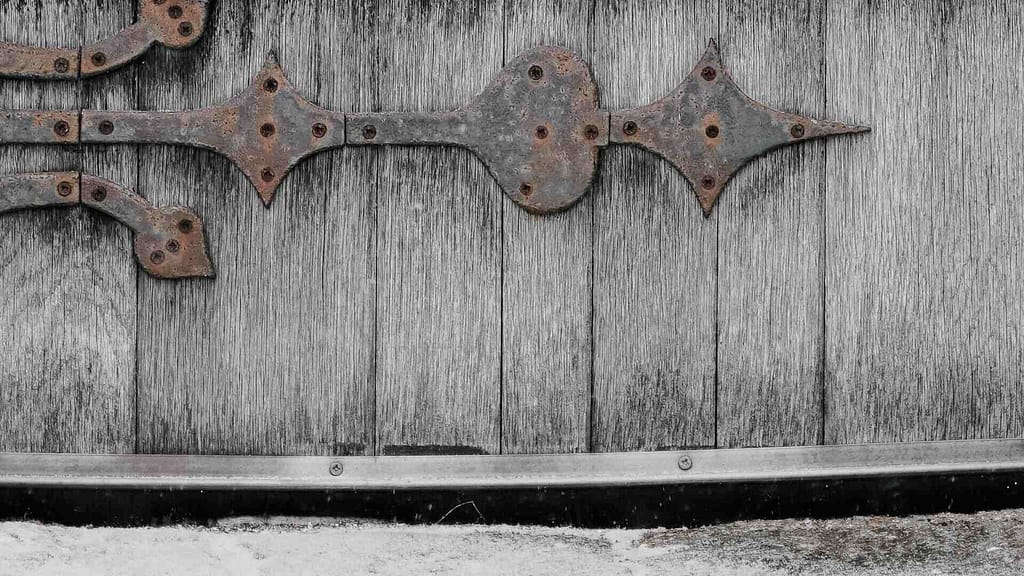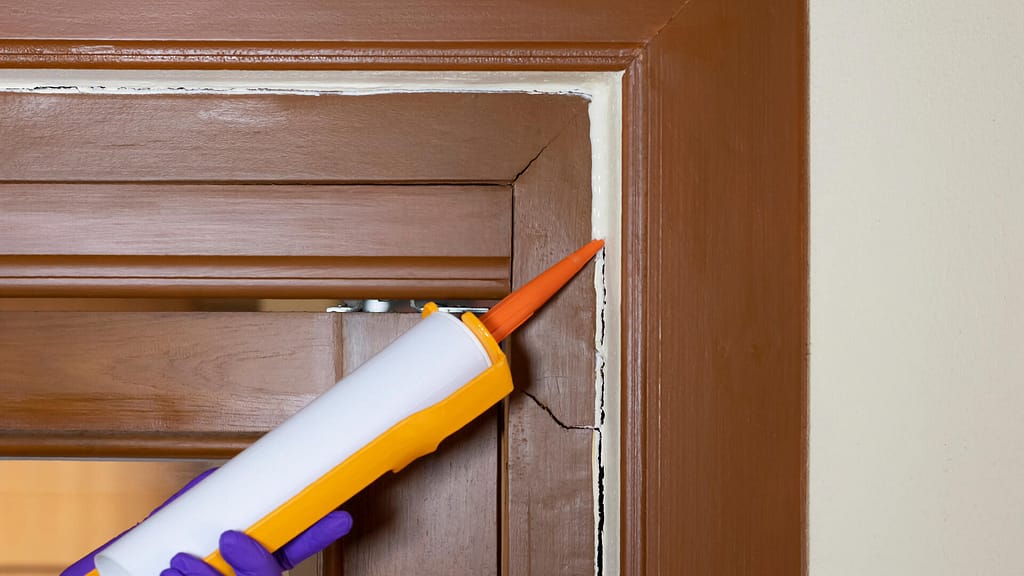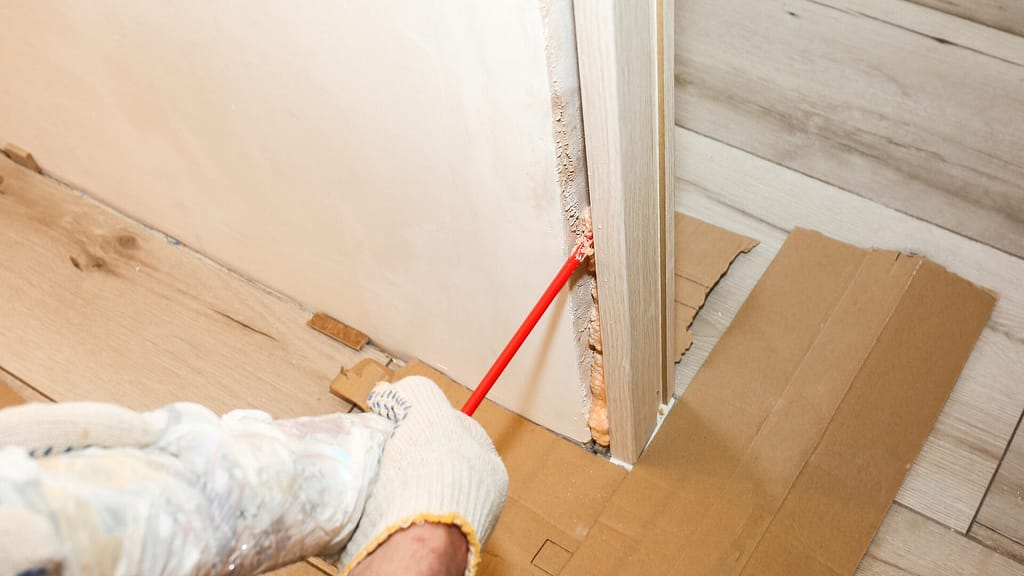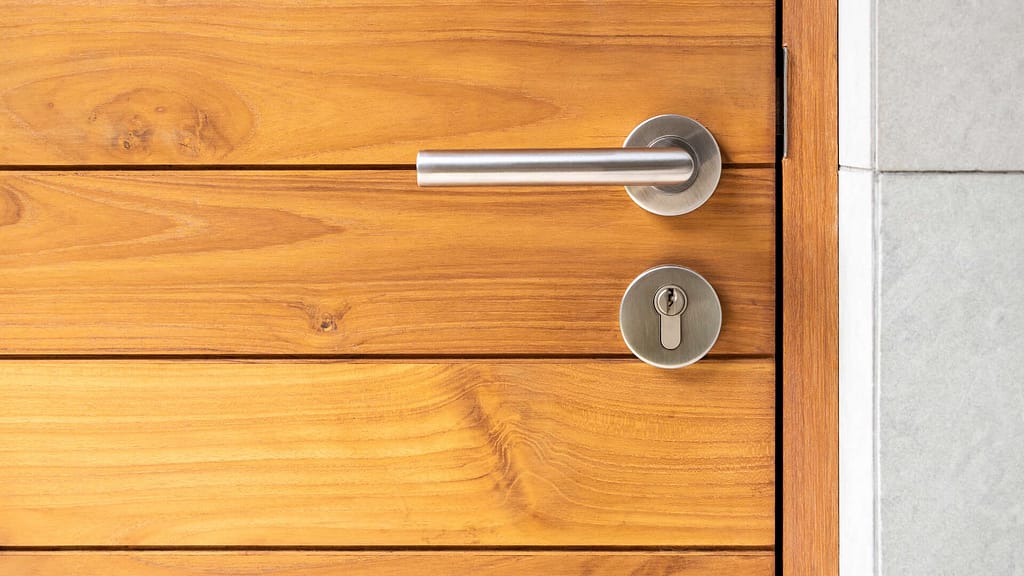Installing doors in Virginia demands precision: from preparing the opening to sealing for the state’s climate. Explore our guide for a perfect blend of utility and elegance in your Virginia residence.

Table of contents
Prep for the Installation
Preparing for the installation of an exterior door in Virginia goes beyond mere tools—it’s about understanding the state’s unique climate and adhering to local building codes.
Essential Tools for Installing an Exterior Door in Virginia
Remember, Virginia’s climate can be humid, and it’s exposed to a variety of weather conditions. Ensure the tools and materials you use are suitable for such conditions
- Tape Measure: For accurate door and frame measurements.
- Level: To ensure the door and frame are straight.
- Drill (Preferably Cordless): For pilot holes and driving screws.
- Screwdrivers: Both flathead and Phillips.
- Circular Saw or Jigsaw: If adjustments to door size are needed.
- Hammer & Shims: For leveling and aligning the door.
- Pry Bar: For removing the old door or frame.
- Utility Knife: For trimming shims or insulation.
- Caulking Gun & Weatherproofing Sealant: For sealing against weather.
- Chisel: To fine-tune door hinge recesses.
- Lockset Installation Kit: If door needs handle and lock holes.
- Safety Gear: Safety glasses and gloves.
This streamlined list focuses on the most critical tools for door installation in Virginia’s conditions. Always ensure you refer to the door manufacturer’s guidelines for any additional recommendations.
Understanding Virginia’s Building Codes
It’s essential to ensure that any installation is compliant with the latest codes and regulations to avoid potential legal issues and to ensure the safety and durability of the installation. If you’re apart of an Home Owners Association (HOA), check with them on rules regarding door sizes, colors, and characteristics.
Sizes Of Doors
Doors should have a minimum clear opening width of 32 inches when open at 90 degrees. For doors with two leaves, one should meet this width. A swinging door’s width shouldn’t surpass 48 inches, while doors in Group I-2 settings, used for bed movement, must be at least 41.5 inches wide. Generally, doors should stand 80 inches tall, though there are specific exceptions based on the door’s purpose and the room’s size and type.
Door Operations
Per the Virginia Construction Code, egress doors should be easily openable without a key or special effort. Accessible door hardware, including handles and locks, shouldn’t need tight grasping or wrist twisting and should be positioned between 34 to 48 inches from the finished floor. Exceptions include doors or gates of pools, spas, and hot tubs, which can have latches up to 54 inches high. Certain locks and latches are permissible, such as in detention places, main exterior doors of specific building groups, or paired egress doors. Manually operated bolts are generally not allowed, but there are exceptions based on door location and function. Unlocking a door shouldn’t require more than a single action, but exceptions exist for places like detention centers or specific door types. Source
To determine the specific legal requirements and codes related to installing an exterior door in Virginia, you should:
- Check the most recent version of the Virginia Uniform Statewide Building Code.
- Contact local building departments or municipalities, as local codes and regulations might have additional stipulations or variations from the state code.
- Consider consulting with a local contractor or builder who would be familiar with any specific requirements for your area.
Steps to Installing an Exterior Door
Now that you’ve completed reading building codes for your exterior door. Let’s dive into how to install it. From measuring accurately to securing with the final nail, this basic guide walks you through each step, ensuring your home’s new addition is both functional and stylish.

- Site Assessment: Before you begin, assess the installation site. Check for any obstructions, structural issues, or challenges that might affect the installation process.
- Prep the Opening: Double-check measurements for door size, jamb width, rough opening, and exterior opening. Ensure the new door matches the dimensions.
- Remove the Old Door Frame: Detach the door, trim, and jambs.
- Test-Fit the Door: Check how well the door fits the opening. Adjust with shims or trim as necessary.
- Install the Door: Apply caulk, reinsert the door, adjust with shims, remove retaining brackets, and secure with long screws and nails.
- Check Door Operation: Before finalizing the installation, open and close the door several times to make sure it operates smoothly without sticking or binding.
- Insulate and Add Trim: Seal gaps with caulk or foam and then install trim. Add final touches like locks or transitions.
Sealing and Insulating
Virginia has all sorts of weather, from hot summers to cold winters. If your door isn’t sealed well, cold or hot air can get in. This makes heaters and air conditioners work harder and raises your energy bills. It can also make your home less comfy.
To handle this weather, it’s important to seal and insulate your outside doors well. Here’s how to make sure your door is ready for Virginia’s changing weather
Identify Gaps
Begin by inspecting your exterior doors for visible gaps. Especially check the sides and bottom where drafts are most common.

Sealant Selection
Go for a high-quality weather-stripping sealant suitable for your door type. Adhesive-backed foam and V-strip are popular choices for their durability and ease of installation.

Install Door Sweeps
Positioned at the bottom of doors, sweeps play a pivotal role in preventing cold air from sneaking in and warm air from escaping. They are particularly effective against the cold drafts common in Virginia’s winters.

Use Expanding Foam
For larger gaps, especially around the door frame, use an expanding foam sealant. It fills the voids, providing both insulation and a barrier against moisture. Make sure to choose an expanding foam made for gaps and cracks. Cover the floor with cardboard or paper to avoid a mess.

By taking these measures, you not only enhance your home’s energy efficiency but also ensure a comfortable living space, irrespective of Virginia’s sometimes unpredictable weather patterns.
Finishing Touches
In Virginia’s ever-changing climate, ensuring your exterior door’s hardware is both durable and secure is essential.

Weather-Resistant Materials
Go for handles and locks made of materials that can resist rust and wear, like stainless steel or brass. This will help them last longer despite Virginia’s humidity and potential rain.
Security Features
Given the importance of safety, consider deadbolt locks with double sided key. These provide an added layer of security compared to regular latch locks.
Conclusion
Installing an exterior door in Virginia is not just about aesthetics or access; it’s an intricate blend of functionality, security, and resilience against the state’s diverse climate. From adhering to Virginia’s specific building codes to ensuring doors are sealed and insulated against its varied weather conditions, there’s a wealth of considerations to be made. Beyond the structure itself, the importance of the door’s accompanying hardware cannot be understated. Materials that can withstand the state’s humidity, rain, and temperature fluctuations, combined with security features such as deadbolt locks, play a pivotal role in ensuring longevity and safety. If you’re unsure of any part of installing an exterior door. Get a free exterior door quote from American Home Contractors in Virginia and we can do it quickly and professionally.
Fact checked by Adrian Catolico – 8/28/23